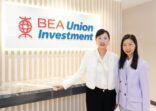It will be the first actively-managed OFC available to retail investors since the corporate fund regime was introduced under the Securities and Futures Ordinance in July 2018.
Called the BU APAC Bond Fund, it is a sub-fund of the BU Fund Series OFC, and will be managed by Pheona Tsang, BEA Union Investment’s fixed income chief investment officer, according to a spokeswoman.
“With our expertise in Asian fixed income, we plan to launch a new fund which focuses on Asian investment grade bonds; it is good timing since the OFC structure is ready,” the spokeswoman told FSA.
An OFC is an investment fund in corporate form domiciled in Hong Kong. It is different from a unit trust, which is the typical Hong Kong-domiciled public investment vehicle, because it has a separate legal person or entity and has a board of directors, according to the SFC.
Traditionally, an open-ended investment fund which proposes to domicile in Hong Kong is usually established in the form of a unit trust rather than a company limited by shares, because companies incorporated in Hong Kong are not allowed to reduce their capital unless specific procedures are followed.
However, the OFC regime allows fund managers, licenced or registered with the SFC for conducting Type 9 (asset management) regulated activity, can form a Hong Kong limited liability company with a variable share capital structure to be subscribed and redeemed by the investors, as well as pay distributions out of net assets or capital.
Similar corporate structures are common in overseas fund markets, such as the US, UK, Luxembourg and Ireland. Scott Peterman, Hong Kong-based partner at global law firm Orrick, told FSA earlier this year that Ireland’s ICAV structure was probably the model for the Hong Kong version. In fact, several overseas funds authorised by the SFC for public offering in Hong Kong are in corporate structure.
Singapore introduced its variable capital companies (VCC) framework in January this year, with hopes that it would provide fund managers with greater operational flexibility and cost savings, as well as encourage more funds to be domiciled in the Lion City.
In Hong Kong, there have already been five OFC launches, including three ETFs managed by Mirae Asset Global Investments, and a private fund each by Cedar Asset Management and Pacific Hawk.
BEA fixed income stable
The firm has several existing Asia bond unit trusts, including the $553m Asian Bond and Currency Fund managed by Tsang since 2012, which has a strong tilt towards high yield bonds. The average credit rating of its holdings is BB-, with about 95% of AUM exposed to sub-investment grade bonds to generate a current yield of 8.2%, according to its April factsheet.
The fund was a standout performer among fixed income funds during the last decade, posting a 119.05% cumulative return between 1 January 2010 and 31 December 2019, the highest of all fixed income funds in any category available to Hong Kong retail investors for the full 10 years, according to FE Fundinfo data.
However, performance suffered badly during the mid-March sell-off in risk assets, although it recovered in April and May. It has a cumulative loss of -0.80% during the past three years, compared with a 7.66% gain by its sector average, and its NAV experienced greater volatility than its peers, with annualised volatility of 9.79% compared with 5.39%, according to FE Fundinfo.
It is perhaps unsurprising that BEA has therefore decided that the mandate of its new fund should be investment grade, rather than high yield bonds.
The $112m BEA Asia Pacific Investment Grade Bond Fund is a less high profile product in the firm”s fixed income stable run by Tsang, but it has held up better during the Covid-19 pandemic.
The fund has achieved a 12.71% cumulative return since its inception in June 2017, with annualised volatility of only 4.49%.
BEA Union Investment Asian Bond and Currency Fund* vs sector average


















